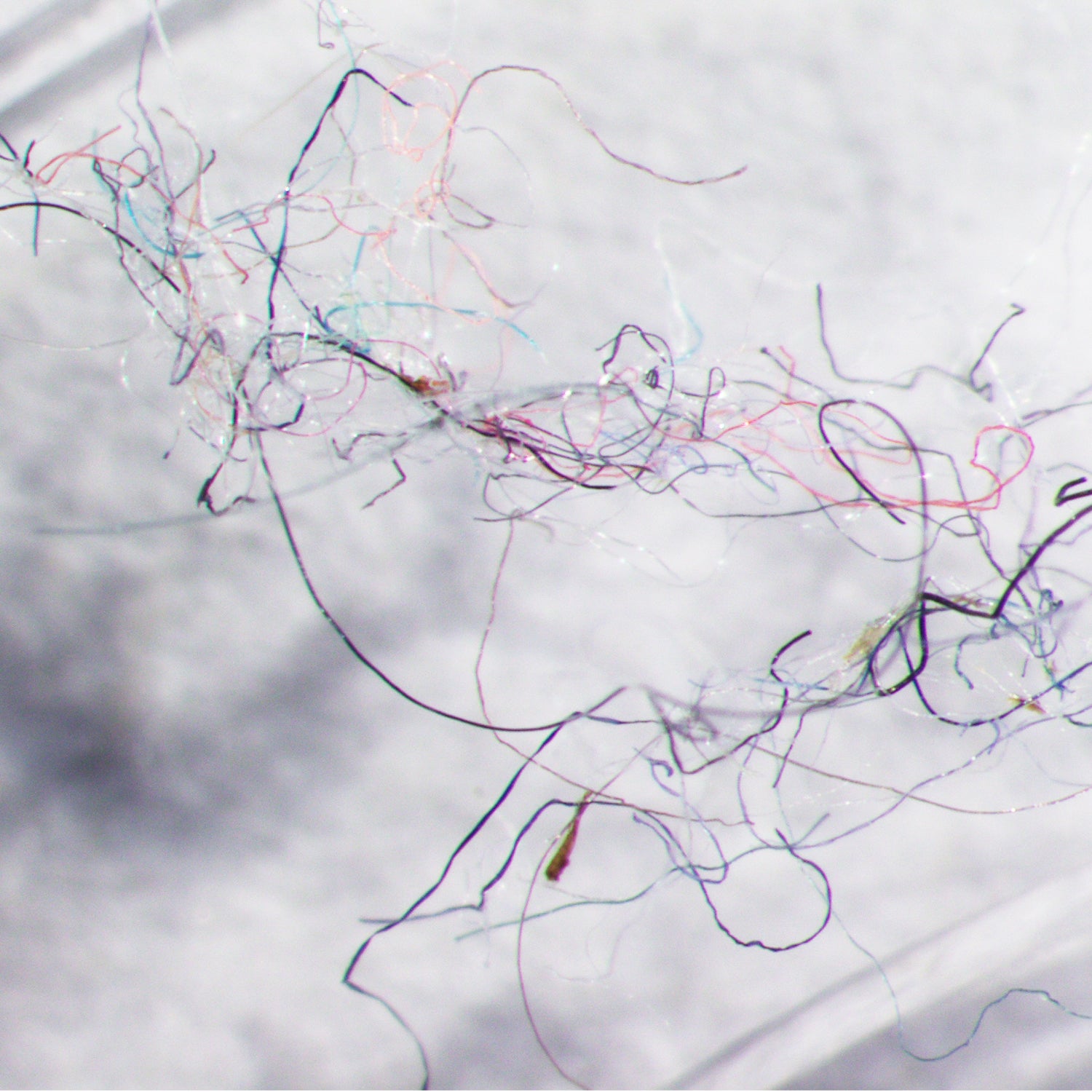By now you‚Äôve probably heard the news: your favorite fleece sheds¬Ý¬Ýevery time it‚Äôs washed. Those fibers often skirt through¬Ý¬Ýand make their way into aquatic organisms that¬Ýeat the floating fibers. That‚Äôs bad for the fish, because the fibers are vectors for toxins and can retard their growth, and it could be bad for people who eat the fish.
This shedding¬Ýputs outdoor manufacturers in a bind: many¬Ýwant to protect the outdoors, but they also want to sell product.¬ÝConsumers who love their warm fleece are also faced with a dilemma.¬Ý
Some brands have taken steps to address the threat of¬Ýmicrofibers, which are considered a type of microplastic pollution. In 2015, Patagonia asked university researchers to quantify how much fiber its products shed during laundry‚Äîthe answer was¬Ýa lot. And the¬Ý¬Ýhas convened a working group to start examining microfiber pollution. But here‚Äôs the thing: rather than using money to develop a process that¬Ýprevents the shedding, most¬Ýbrands are still focused on defining their culpability. Because there are other sources of microfiber pollution in the sea, such as fraying fishing ropes,¬Ýthese¬Ýbrands want to be able to know for certain how much they‚Äôre contributing before they move¬Ýfurther.¬Ý
That won‚Äôt be an easy task, but , an REI-like retailer headquartered in Vancouver, recently gave microplastics researchers at the¬Ý¬Ýa $37,545¬Ýgrant to help scientists develop a tracking process. The yearlong project will be led by the aquarium's ocean pollution research program director and senior scientist Peter Ross.¬ÝThe first step is to create a database of fibers from up to 50 different textiles commonly used in MEC‚Äôs house-brand apparel.
This won‚Äôt be a simple spreadsheet with the names of the polymers, like polyester or nylon. Each piece of outdoor apparel is treated with chemicals like a durable water repellant (DWR). Then there‚Äôs the¬Ýkaleidoscope of colors in each brand‚Äôs catalog. Those variants give the fibers a unique profile, sort of like a fingerprint. To capture those fingerprints, Ross and his team will use a machine called a¬Ý, which looks at the fibers on a molecular level.
Once that database¬Ýis created, the researchers will subject the fibers to saltwater, sunlight, wave action, freshwater, and bacteria¬Ýto mimic the types of weatherization that they would experience in the field. In fact, one set of fibers will be staked out in Vancouver Harbor and another in the Frasier River estuary. A¬Ýthird set, for the sake of experimentation, will be artificially weathered inside the aquarium‚Äôs lab. After increments of time‚Äî30, 60, 90, and 180 days‚Äîthe fibers will be reexamined and any changes in those polymer fingerprints will be documented and added to a database. The hope¬Ýis that sometime in the future, a¬Ýrandom synthetic microfiber could be pulled from Vancouver Bay,¬Ýanalyzed, and determined to originate¬Ýfrom an MEC jacket.¬Ý
Why bother with this experiment, as¬Ýthe chances of finding an MEC fiber in the vast ocean are infinitesimally small? Ross says it will advance much needed basic research¬Ýby shedding light on how fibers change once they‚Äôre in the environment. For MEC, this is a chance to lead the apparel industry‚Äôs response to microfiber pollution by providing a protocol for tracing microfiber pollution back to its source.¬ÝTo prove that the protocol is effective and viable, it will need to be repeated many times, and, eventually, by different researchers in different labs. Arc‚Äôteryx is next in line. The company will also be giving the aquarium a grant (it¬Ýwouldn‚Äôt say how much) to study fibers coming off its apparel.
Skeptics like¬ÝStiv¬ÝWilson, campaign director for environmental activism¬Ýgroup , thinks this is¬Ýall a waste of time. We know there‚Äôs a problem, and he thinks brands should address it in manufacturing instead of delaying. ‚ÄúEco-conscious outdoor brands keep telling me that more research needs to be done on the harms of washing synthetic fabrics such as fleeces and yoga pants,‚Äù¬Ýhe wrote¬Ýrecently. ‚ÄúDo we really need more research to tell us that spreading millions of trillions of persistent fossil-fuel-derived fibers from polyester clothing is a bad idea?‚Äù
MEC‚Äôs chief product officer Jeff Crook asserts that for one or¬Ýa handful of outdoor apparel brands to redesign their textiles would do little to stop the larger flow of synthetic microfibers. Walk into any H&M or other fast-fashion retailer and you‚Äôll be hard pressed to find clothes made only from natural materials. Motivating the largest apparel brands to act, he says, will require developing a tool for directly implicating their products as contributors to microfiber pollution.
Beyond all that, another major hurdle lurks. If or when apparel brands do succeed in redesigning textiles to reduce microfiber shedding, who will set that bar? That, says Crook, is where international standards are needed. ‚ÄúWe have standards meetings at every trade show on things like sleeping bags, on camp-stove temperatures,‚Äù¬Ýhe says. Without global standards that set a limit on how many synthetic fibers garments can shed while being laundered, he says, ‚Äúwe‚Äôre all just dancing around this problem that we know is there: that clothes are sending¬Ýmicroplastics into the marine ecosystem.‚Äù


